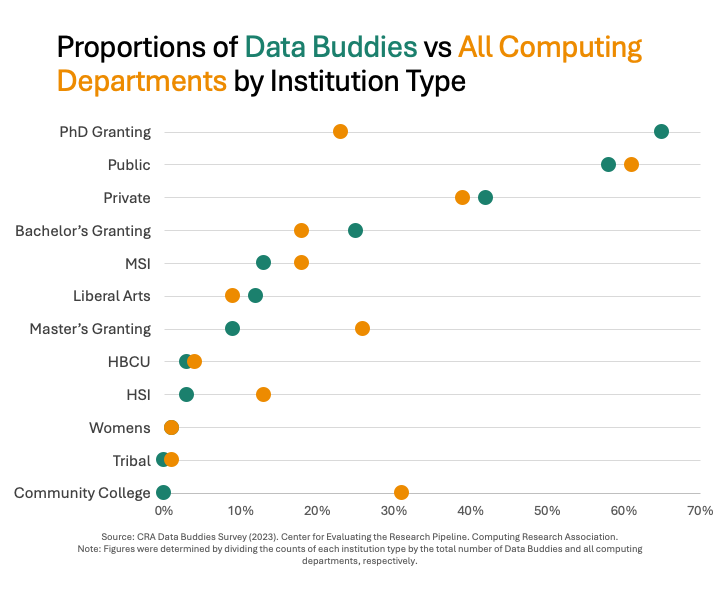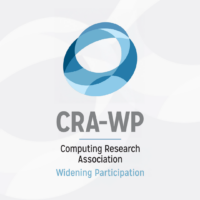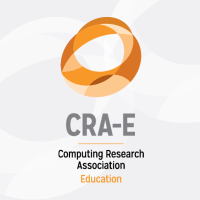How representative are Data Buddies departments compared to computing departments overall?
By Brendan Kane, Research Associate, CERP

The Data Buddies Project is a long-standing initiative of CRA’s Center for Evaluating the Research Pipeline (CERP). The project began in 2010 with just 10 institutions participating (Wright, 2021). Since then, the number of institutions participating has increased to 147 in the 2023 Data Buddies Survey (DBS) cycle. The survey captures various measures from individuals in the computing field. Some of the measures in DBS include previous education and past experiences, general attitudes and beliefs regarding computing, and future plans and career aspirations.
CERP recently conducted an analysis comparing the departments that are currently participating in the Data Buddies project (n = 147) to computing departments at large. To conduct the analysis, CERP compared DBS institutions to the general population of institutions that awarded degrees in computing in the US in terms of their institutional characteristics (e.g., MSI status, highest degree awarded). The overall population of institutions was obtained based on the IPEDS degrees awarded data by selecting any institution that awarded a degree in a computing field (CIP codes 11.01, 11.04, 11.07, and 14.09) in 2022. Once the total proportions were determined within both Data Buddies schools and the overall population of institutions that awarded degrees in computing, CERP compared the difference in proportions to determine the representation status.
The analysis revealed that some of the institution types are similarly represented among DBS institutions as they are in the overall population of institutions. For example, MSIs, HBCUs, and bachelor’s degree granting institutions are all within 10% of their proportion in the overall population. However, there are other types of institutions for which there is a larger difference between their representation in DBS sample and the overall population of institutions. Specifically, community colleges, master’s degree granting institutions and HSIs are underrepresented among Data Buddies institutions. Additionally, the analysis found that doctoral degree granting institutions are overrepresented in the current Data Buddies institutions.
Help us make a change!
Using this information, the CERP team is working hard to balance the representation of institutions in the DBS. We highly encourage any departments interested in joining the project to sign up, especially if your academic department is among those underrepresented in our total proportions. Data collected via the project can help your department learn useful insights into student attrition and retention, as well as factors that support the successful matriculation into graduate school and research careers. Participating in the Data Buddies Survey is free for all departments. If your department is interested in becoming a part of the Data Buddies project, sign up here. If you would like to learn more about the project, click here.
References:
Wright, H. (2021). Expanding the Pipeline: Celebrating 10 years of the CRA Data Buddies Project. Computing Research News, 33(8): Washington, DC. URL: https://cra.org/crn/2021/09/expanding-the-pipeline-celebrating-10-years-of-the-cra-data-buddies-project/
The data analyzed for this infographic were collected by the Center for Evaluating the Research Pipeline via The Data Buddies Project. CERP provides social science research and comparative evaluation for the computing community. Subscribe to the CERP newsletter here. Volunteer for Data Buddies by signing-up here.
The Data Buddies Project is currently supported through U.S. National Science Foundation (NSF) awards (1821136, 2036717, and 2335072), sub-awards and contracts, and direct CRA contributions. Previous NSF awards that supported DBS include 1246649, 1431112, and 1840724. Any opinions, findings, and conclusions or recommendations expressed in this material are those of the author(s) and do not necessarily reflect the views of the National Science Foundation.









